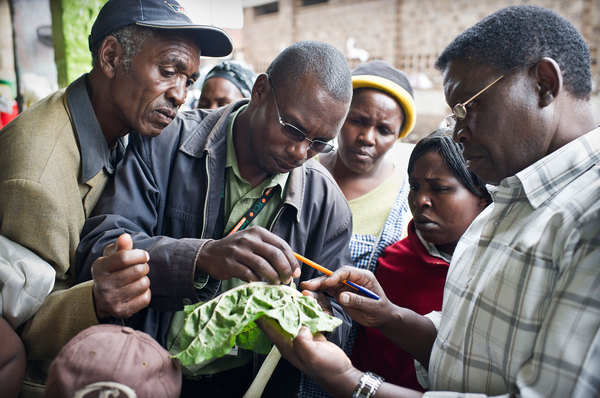The Rotterdam Convention: safeguarding human and environmental health from hazardous chemicals and pesticides
Contributed by Melanie Bateman CABI, Switzerland This year marks the tenth anniversary of the entry into force of the Rotterdam Convention, which aims to: Promote shared responsibility and cooperative efforts among Parties in the international trade of certain hazardous chemicals in order to protect human health and the environment from potential harm; Contribute to the environmentally sound use…
Update: Plant Health News (16 Jan 14)
Here’s a taste of some of the latest stories about plant health, including the role of radio and mobile phones in boosting crop yields in Namibia, the discovery of ants protecting Acacia trees from pathogens and different approaches to controlling the emerald ash borer in the US. Click on the link to read more of…
Update: New Pest & Disease Records (13 Jan 14)
We’ve selected a few of the latest new geographic, host and species records for plant pests and diseases from CAB Abstracts. Records this fortnight include the migration of rice planthoppers and their vectored rice viruses in East Asia, Alternaria alternata as a new foliar fungal pathogen of tea in Southern India and the first report of downy mildew…
UK Needs Increase In Agriculture Graduates To Tackle Global Food Security
Increasing the production of food in an environmentally sustainable way is a major global issue. A report produced by the UK Cabinet Office in 2008 predicted that the global population will rise to 9 billion by 2050 from a current 6.8 billion. This increase in population will substantially increase demand for food, with food production…
Update: Plant Health News (18 Dec 13)
Here’s a taste of some of the latest stories about plant health, including the use of technology to improve the detection of papaya viruses, toxins discovered in banana root tissue kill root pests and the vital importance of water conservation in Nigeria to avoid food crises. Click on the links to read more of the…
Update: New Pest & Disease Records (11 Dec 13)
We’ve selected a few of the latest new geographic, host and species records for plant pests and diseases from CAB Abstracts. Records this fortnight include the first report of Bipolaris papendorfii causing corn leaf spot in China, the first report of black spot disease caused by Alternaria alternata on sweet persimmon fruits and two new species…
Update: Plant Health News (04 Dec 13)
Here’s a taste of some of the latest stories about plant health, including a new banana disease identified in Africa, ways to deal with oil seed rape pests after the neonicotinoid restrictions and the role of agricultural cooperatives and storage in rural Ethiopia. Click on the link to read more of the latest plant health news!
Good news for Ghana’s plant health promoted this National Farmers’ Day
National Farmers’ Day is a day set aside to commemorate the contributions of farmers and fishermen to the national development of Ghana. Combined, these industries account for over 45% of the country’s annual GDP. At this year’s official Farmers’ Day ceremony at Sogakope in the Volta region, Plantwise and partners will take the opportunity to…
Update: New Pest & Disease Records (27 Nov 13)
We’ve selected a few of the latest new geographic, host and species records for plant pests and diseases from CAB Abstracts. Records this fortnight include the first report of Curtobacterium flaccumfaciens pv. flaccumfaciens on soybean in Brazil, the first report of Iris Yellow Spot Virus infecting onion in Pakistan and the occurrence of anthracnose on chickpea in Malaysia.
See Xanthomonas bacteria infecting a tomato plant [Video]
If you’ve ever wondered what exactly happens when a disease infects a plant, watch this video. This detailed animation shows Xanthomonas bacteria infecting a tomato plant, causing bacterial spot disease. For more information about Xanthomonas in plants, and how to control it, visit the Plantwise Knowledge Bank.

